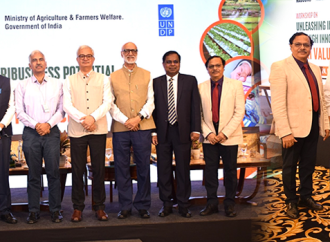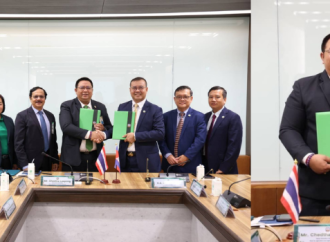Dr K.G.Karmakar, Managing Director, and Dr G.D.Banerjee, Deputy General Manager, NABARD, Head Office, Bandra Kurla Complex, Mumbai Abstract The article describes the important role played by Marine fishereis in the Indian economy. It elaborates the issues associated with value addition of this sector with special reference to optimum capacity utilisation of processing industries, product diversification
Dr K.G.Karmakar,
Managing Director, and
Dr G.D.Banerjee, Deputy General Manager,
NABARD,
Head Office, Bandra Kurla Complex, Mumbai
Abstract
The article describes the important role played by Marine fishereis in the Indian economy. It elaborates the issues associated with value addition of this sector with special reference to optimum capacity utilisation of processing industries, product diversification and adherence to quality control regulations. The article suggests a time bound, well defined investment programme backed up by appropriate policy framework and technology infusion programme for the development of Marine Fisheries sector.
Background:
Fisheries play a very important role in the Indian economy. It provides employment opportunities to large sections of the population, supplies rich protein diet at affordable costs and earns foreign exchange. The fisheries sector contributes about 2.5 per cent of the total GDP and 5.12 per cent of the GDP from agriculture sector. The present fish availability is around 6 million tonnes whereas the potential is about 9.4 million tonnes. In view of the potential and prospects for development of the sector, Government of India has set a target to increase fisheries export from Rs.6000 crore to Rs.14000 crores during the X1 Five Year Plan Period. The target set by GOI in terms of export promotion is a function of the raw material supply; optimum capacity utilisation of processing industries, product diversification; value addition and adherence to quality control regulations. The present discussion would primarily address issues connected with value addition.
While export of fish and shrimp in various forms, constitutes more than 70 % of Indian sea food exports, shrimp alone accounts for 71.5 % of the value of exports. However, the major share of the present export in volumetric terms is in bulk form while a small share of the exports comprise of value added products. The share of export of shrimp in block frozen form is around 22 % as against 2.2 % in IQF form. The unit value of IQF products being Rs.475 per kg as against Rs.194 per kg for the block frozen shrimp, there is considerable scope for boost of marine exports through value addition. Similarly, the share of fish surimi which is priced at Rs.68/kg, is only 3.2 per cent of the total export as compared to that of ribbon fish (which is the raw material for surimi) which is priced at Rs. 25/kg and enjoying an export share of 18.3%. Value addition to a part of the fish catch disposed in fresh form, could lead to a transformation of the domestic market which is experiencing a sea change with an increasing demand for processed and ready-to-eat fish products like Breaded and Battered fish items, Fish Burgers, Seafood mix, fish fillets, etc. Fish sauce, silage and other fermented products are important areas of value addition at the lower end of the chain. Wastes from processing factories can also be converted into useful food and non-food products. Crustacean processing waste can be made into new products like chitin and chitosan. Shark cartilage, squalene etc. have affiliations in medicine and cosmetics.















